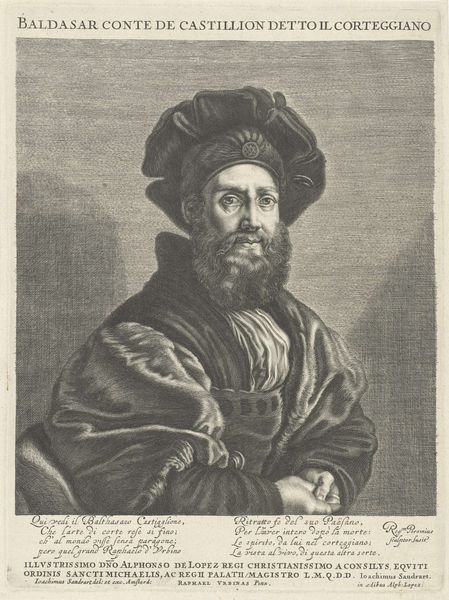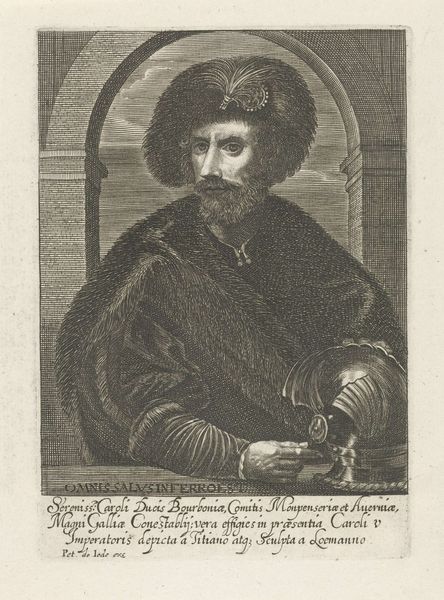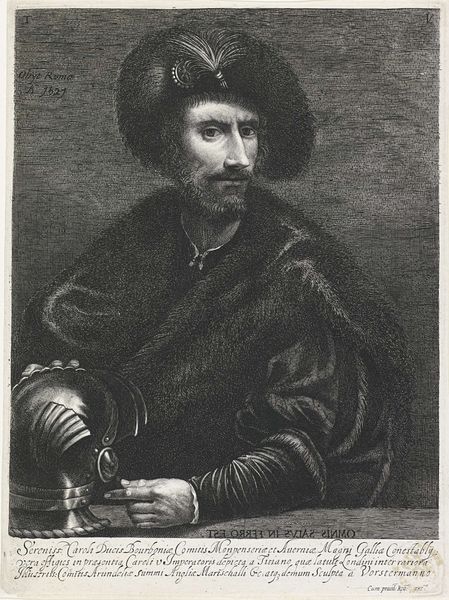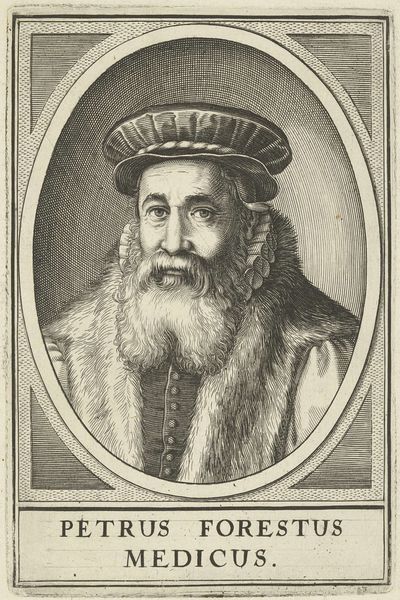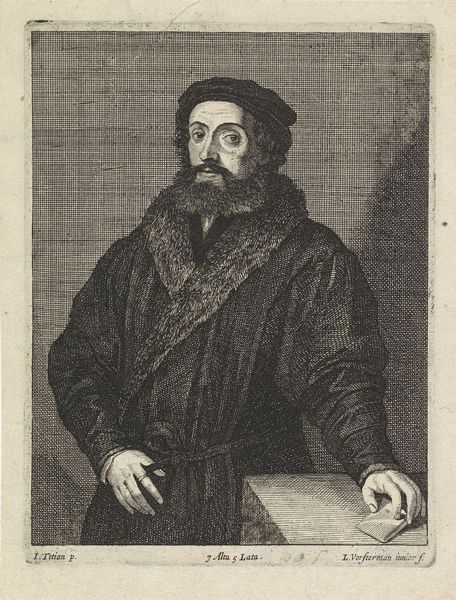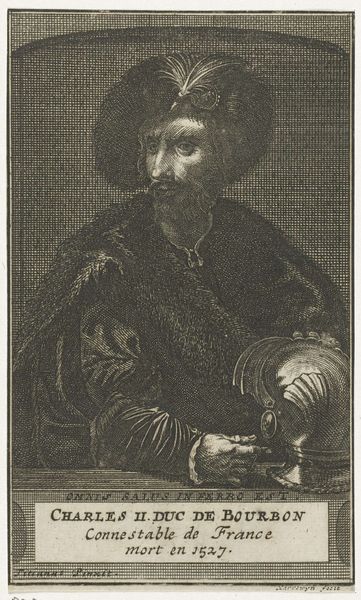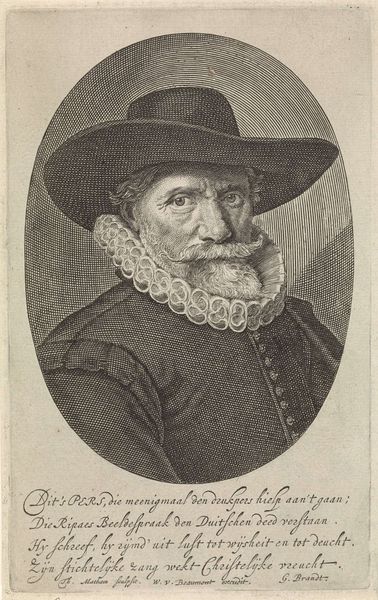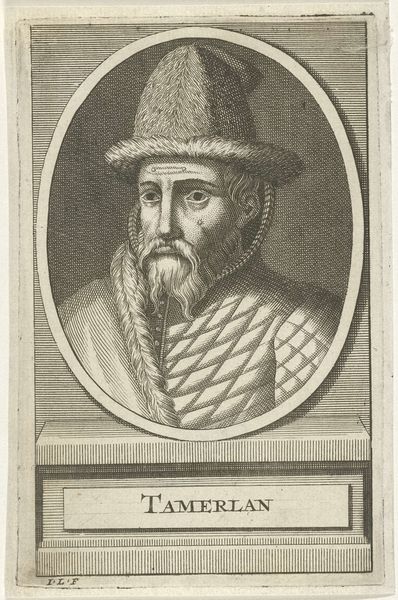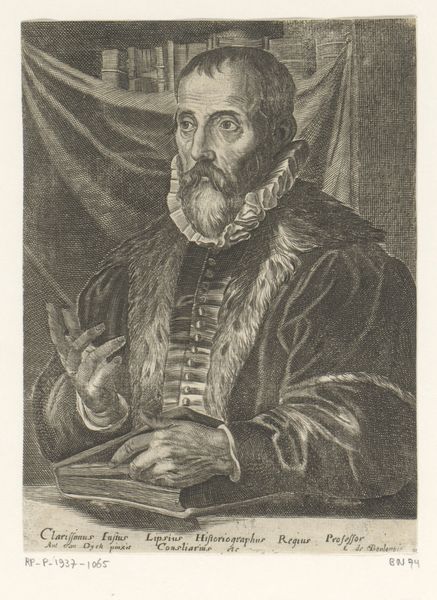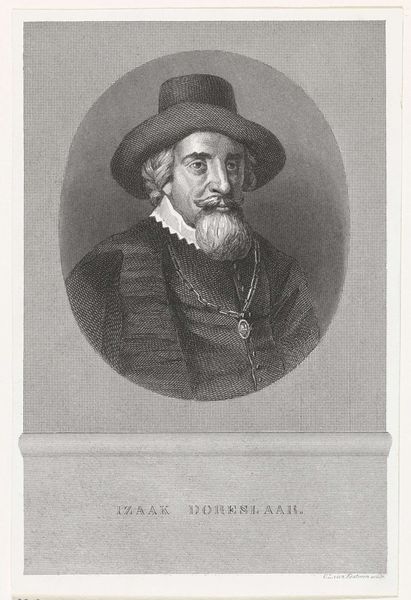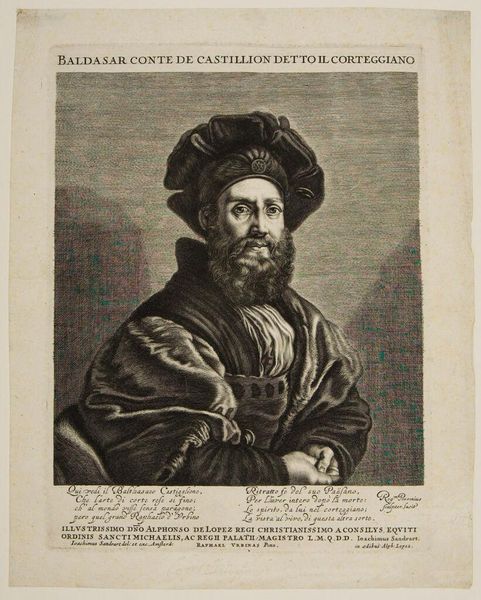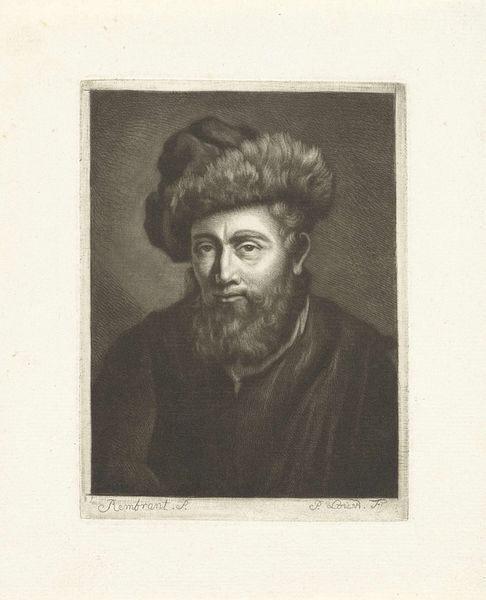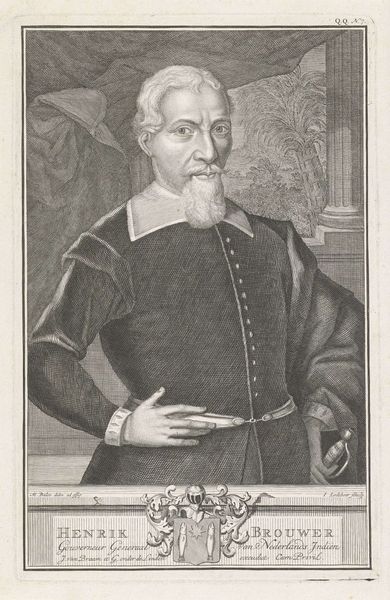
Dimensions: height 139 mm, width 103 mm
Copyright: Rijks Museum: Open Domain
Pieter Louw created this etching, "Portrait of an Unknown Man," sometime in the 18th century. The texture, achieved through dense, linear strokes, defines the form of the sitter. The monochrome palette draws us into a world of contrasts between light and shadow. Louw masterfully uses line to articulate the textures of the man's beard and fur hat, creating a sense of depth within the two-dimensional space. A dense network of fine lines builds up the darker tones, contrasting with the stark whites of the paper to model the sitter’s face, giving him volume. Note how the background, rendered in simple parallel lines, pushes the figure forward, underscoring the portrait's semiotic intent: to capture not just likeness, but presence. Consider how Louw uses the formal elements of line and texture to engage with the concept of representation itself. This etching, through its detailed rendering and strategic composition, invites us to see portraiture as a dialogue between the artist, the subject, and the viewer.
Comments
No comments
Be the first to comment and join the conversation on the ultimate creative platform.
